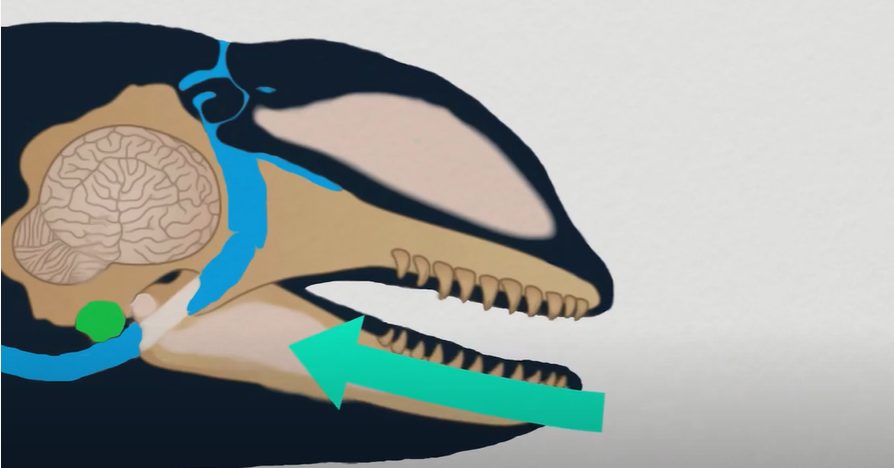The Evolution of Whale Communication
Whales are renowned for the beauty of their song, yet there ability to hear underwater is all about the evolution of whale communication. As the humpback whales migrate north along our coastline they navigate and communicate with each other across kilometres. But how do they communicate so clearly underwater?
How Do Whales Hear Underwater?
Whales are mammals just like us, yet our underwater hearing is muffled and directionally confusing. Professor Tracey Rogers explains in this five-minute video that the whales’ ability to discern direction of sound underwater is thanks to the unique construction of whale ears, known as ‘auditory bulla’.
In fact, it is the auditory bulla that has led scientists to believe that whales evolved from a land mammal known as a pakicete. This hippo-like mammal was swimming in Earth’s waterways about 50 million years ago.

Hearing For Survival
When not underwater we rely on the audio reaching one ear first, thus communicating its direction. Through water, the sound reaches all of our body at the same time. We are about 65% water, after all. The sound goes straight through us, vibrating our skull. Not knowing where a sound is coming from is not a great survival asset as sound could indicate prey, or worse: a predator.

How Ears Work
Unlike cetaceans – dolphins and whales – our middle and inner ears are attached to our skull. They all vibrate together to register sound. As the techno-heads among us will know, that’s how the headphones known as Aeropex work. Cetaceans have evolved to have their middle and inner ears outside their skull, encased in the dense bone of the auditory bulla. By isolating the auditory bulla outside the skull, skull vibrations no longer affect hearing.
But how does the sound get to the bulla?
Dolphins have their auditory bulla attached to their lower jaw. The jaw is filled with fatty tissue that has the same density as water. So the sound travels through the water and along the fatty tissue to the bulla. As each bulla is isolated at the end of each jawbone sound will reach one side before the other, indicating direction.
What Are Pinna?
Ever put your ear to a seashell and heard the tiniest sounds amplified? For hearing folk this is a ritual of childhood. So it is no coincidence that auditory bulla are curved, like seashell. The shape assists in collecting the sound. For us, our protruding ears collect the sound – think the BFG or the Parkes Telescope. Ever heard someone call your ear your ‘shell-like’? The scientific name for this part of our hearing apparatus is the ‘pinna’.

But don’t get comfortable – hearing differs across marine mammals. Fur seals and sea lions have greatly reduced pinna. Seals have no pinna, just an ear opening used for life on land. When underwater the tissue around the seal’s ear canals swells to close off the opening.

How Do Humpbacks Hear?
Unlike dolphins, baleen whales don’t have the fatty tissue in their jaw. Their bulla are disconnected from their skull, but the ear canal leading to the auditory bulla are plugged with a waxy substance. However, the evolutionary selection for whales with auditory bulla was one of the earliest changes, from the pakicetes to what became whales as we know them today, indicating that hearing clearly underwater supported survival.
This evolutionary development has gifted us with the beautiful whale song. Isn’t nature amazing? Love those whales!
Visit Gowings Whale Trust for more great whale information. Enter your best whale shots into our Whale Watching competition and win a whale watching tour!




